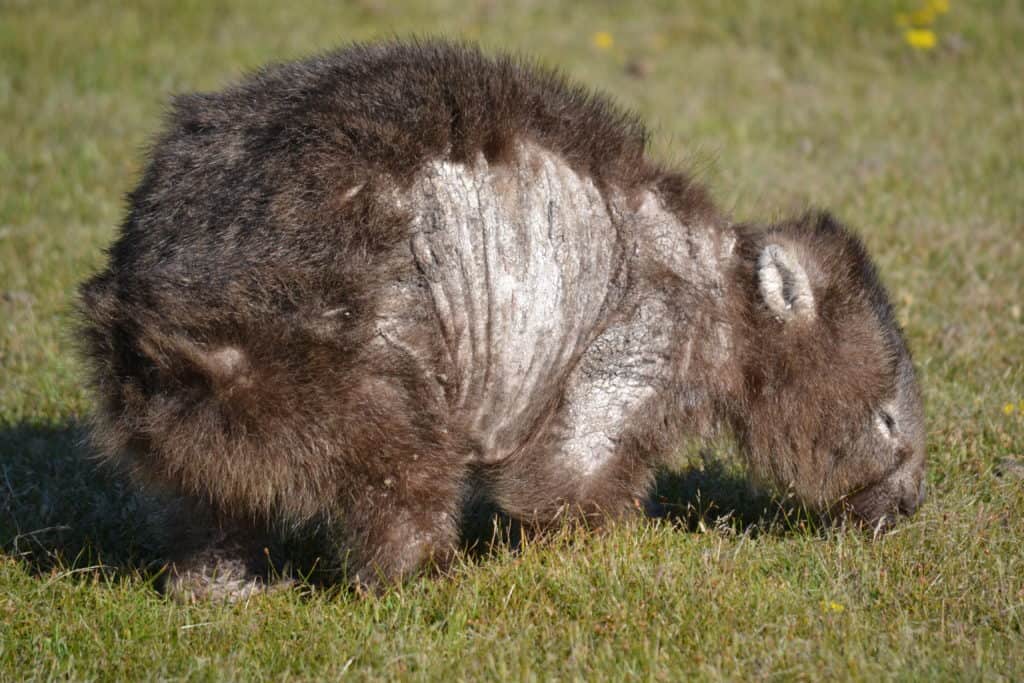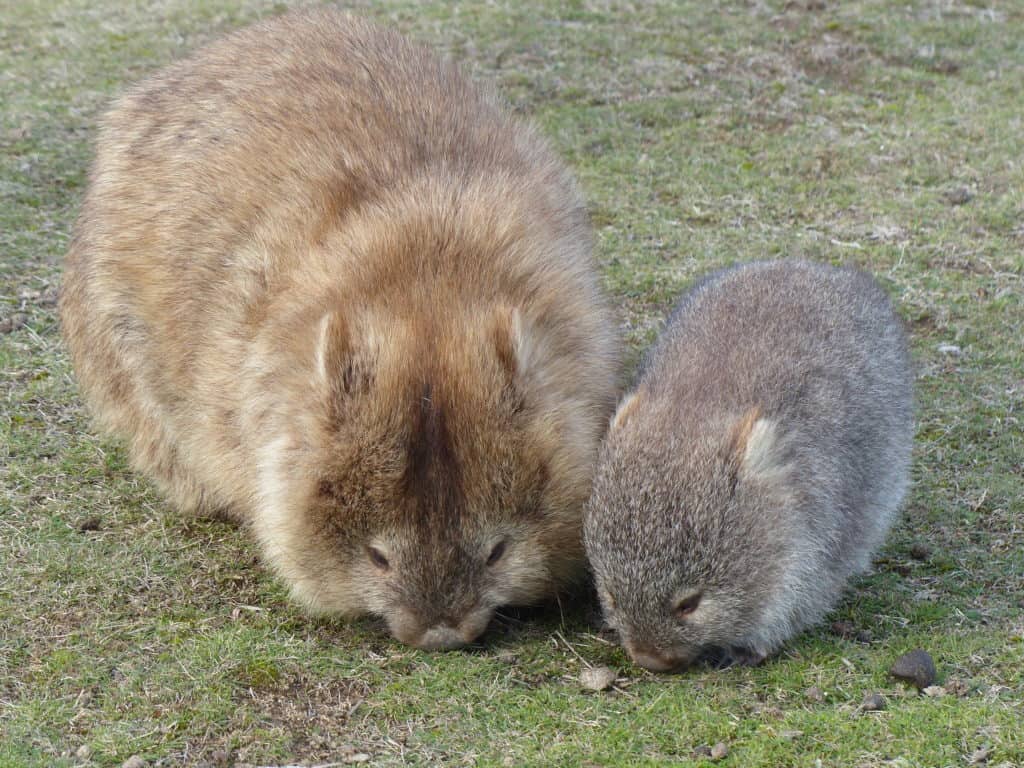Share this article
JWM: Wombat mange outbreak limited to north Tasmania
Sarcoptic mange hit the bare-nosed wombat population of central northern Australia hard. Narawntapu National Park used to be the go-to place for tourists and wildlife watchers to get a close-up view of the heavy-set, burrowing marsupials. But between 2010 and 2016, the population declined 94% due to the parasitic mite-driven disease.
Sarcoptic mange had periodically affected wombats since it first arrived during the early 1800s from Europeans and their domestic animals. It had even had several large outbreaks, but the one in Narawntapu recently was an outlier.
“We’ve never had a large population crash like we’ve seen here,” said Michael Driessen, a senior zoologist at the Tasmania Department of Primary Industries, Parks, Water and Environment. “That raised concerns for the wombat populations more generally in Tasmania.”

A mangy bare-nosed wombat. Credit: Kellie Simpson
Driessen and his co-workers from the University of Tasmania wanted to see if this population collapse was representative of a larger trend across Tasmania or whether it was just a localized problem.
They examined long-term spotlight surveys for two subspecies of bare-nosed wombats (Vombatus ursinus) in the state — the mainland Tasmanian subspecies (V. u. tasmaniensis) and the Bass Strait subspecies (V. u. ursinus). To conduct the nighttime survey, wildlife researchers drove 10-kilometer transects with spotlights, counting any wombats they saw.
For the mainland Tasmanian subspecies, researchers had 34 years of survey data taken from all over the larger island. They also had 25 years of data for the Bass Strait subspecies on Flinders Island, a smaller island off the northeast coast of Tasmania.
The analysis, recently published in a study in the Journal of Wildlife Management, showed that in the central north of Tasmania, bare-nosed wombats decreased due to the outbreak of mange.
But overall during the study periods, numbers appeared healthy, increasing on the mainland by 2.59 times and on Flinders Island by 3.51 times.
“Generally, the population over the past 30 years has increased over time,” Driessen said.
He speculated that the reasons for the overall population increase likely has to do with land use changes that occurred in the past few decades. In particular, improvements to pasture and irrigation as well as conversion of habitats unsuitable for wombats to pasture have benefited the species.

A bare-nosed wombat and its offspring. Credit: Michael Driessen
The researchers also found a positive association between wombats and Tasmanian devil (Sarcophilus harrisii) numbers. They are unsure why this may be, but it could be that they respond to the same changes on the landscape. Both species require similar landscapes for burrows and dens and are likely to respond similarly to year to year variation in climate.
The next step is to find ways to mitigate the localized trends seen in northern Tasmania due to sarcoptic mange. Researchers are currently working on techniques to better manage any future outbreaks of the disease.
“The take home message for us is we’ve got time,” Driessen said.
This article features research that was published in a TWS peer-reviewed journal. Individual online access to all TWS journal articles is a benefit of membership. Join TWS now to read the latest in wildlife research.
Header Image: A wombat on Maria Island off the east coast of Tasmania. Credit: Michael Driessen








